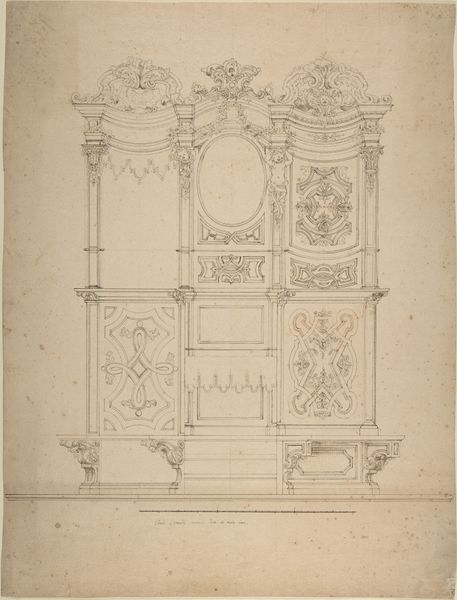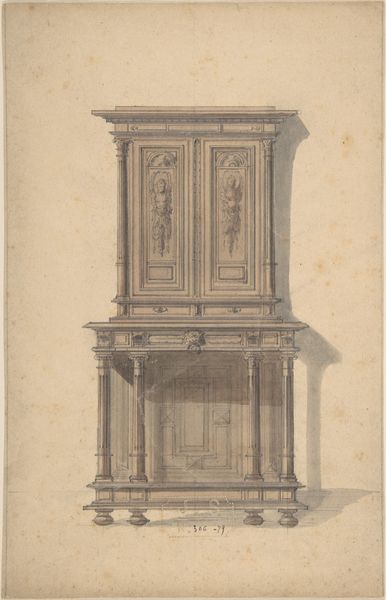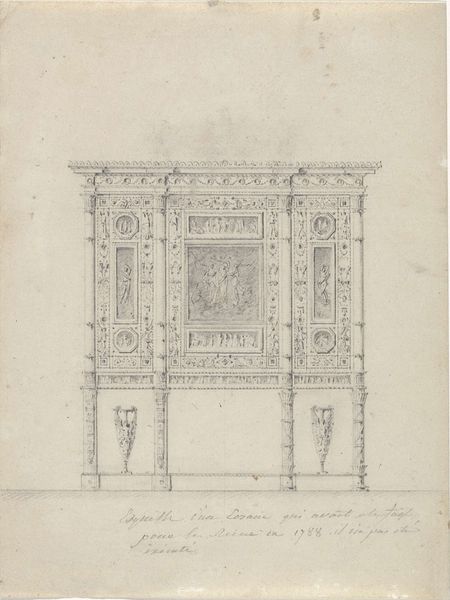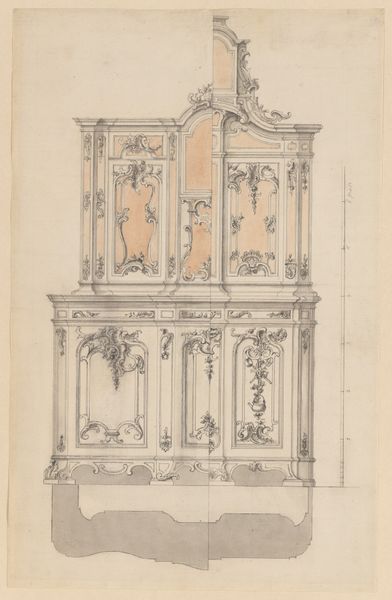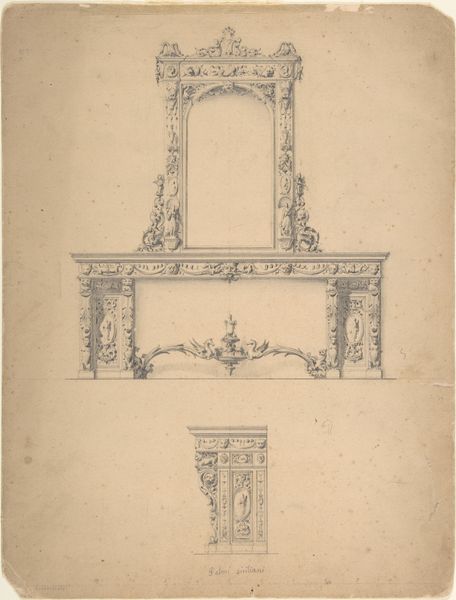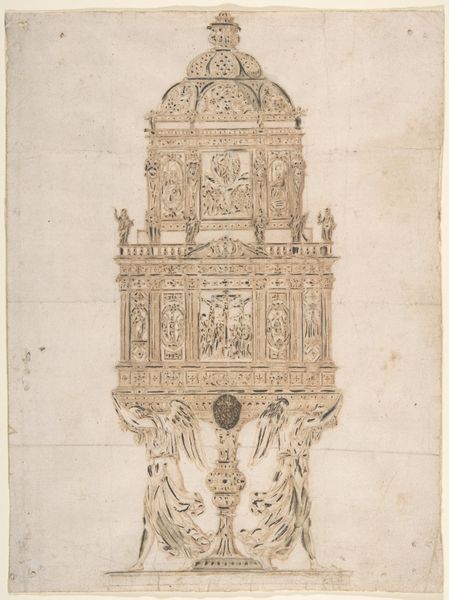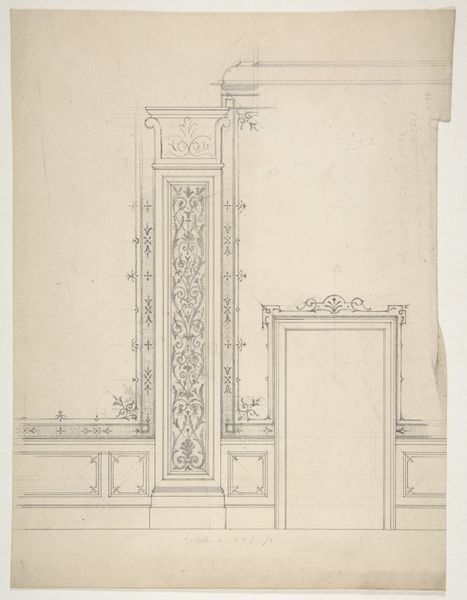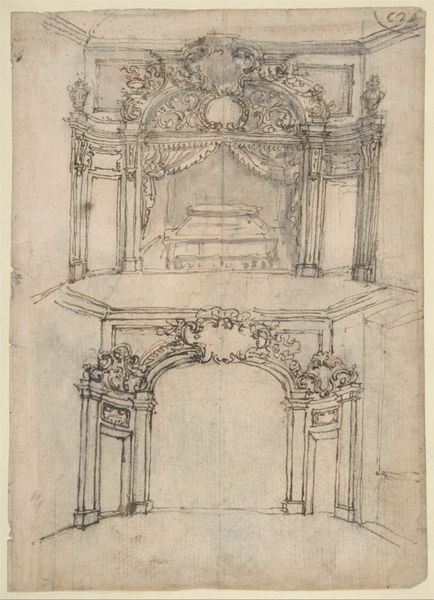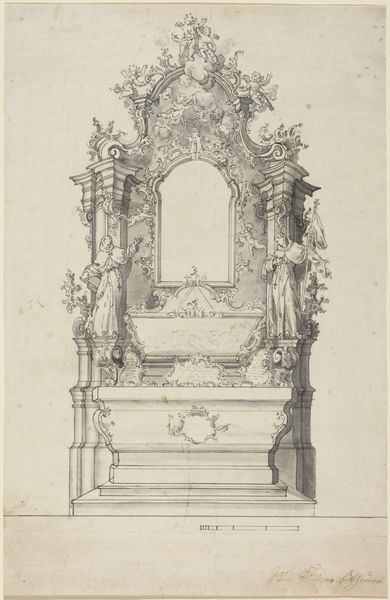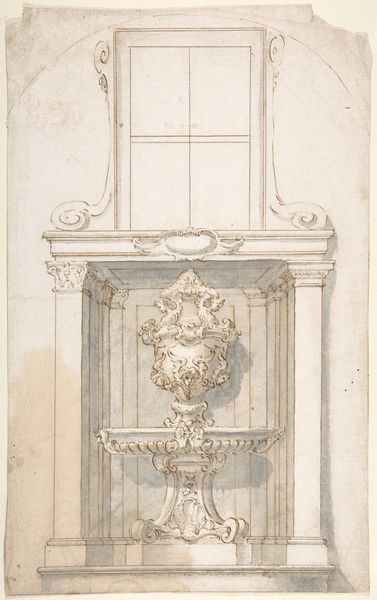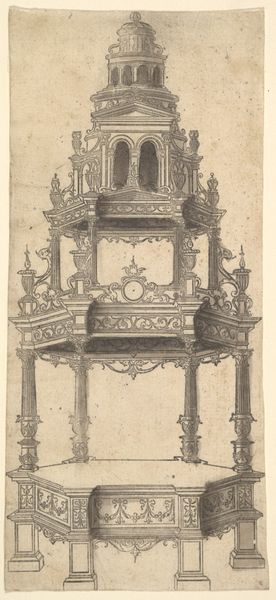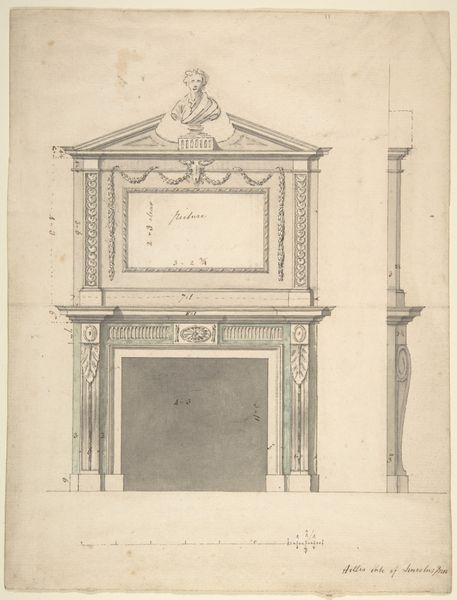
drawing, ornament, pencil, architecture
architectural sketch
drawing
ornament
geometric
pencil
decorative-art
architecture
Dimensions: 10 5/8 x 6 7/16 in. (27 x 16.4 cm)
Copyright: Public Domain
Curator: Here we have an architectural sketch entitled "Design for a Cabinet in Moorish Style," dating roughly between 1800 and 1900, from an unknown creator. It's currently held at the Metropolitan Museum of Art. Editor: My initial impression is that it seems incredibly delicate for a design of architectural intention. The linework is intricate and the composition, while symmetrical, feels ethereal. It suggests a dreamy interpretation rather than a set of practical plans. Curator: The sketch certainly leans into decorative art, doesn't it? Notice how the geometry throughout – the repeated star patterns and the elegant arches – functions beyond mere structural necessity. Semiotically, these shapes connote the exotic, aligning with a European fascination with Moorish aesthetics during that era. Editor: Precisely! It is also necessary to consider that this fascination with “Moorish” aesthetics emerges within a broader history of European colonialism and orientalism. Who was consuming these designs, and what role did they play in solidifying power dynamics between Europe and North Africa? Curator: A critical point. Examining the materiality - this meticulous pencil work – it speaks to an intense process. The artist meticulously detailed the planned ornament; the precision conveys the artisan’s skill. Editor: And the labor that is often erased in the final product! Whose labor? Were they privy to the vision for which they served? The 'Moorish' style often effaced actual people for idealized aesthetics. It provokes crucial questions about cultural appropriation. Curator: The dialogue between intention and impact is unavoidable here. Despite the aesthetic achievements of its geometrical components, the cultural context casts long shadows, impacting how we interpret this drawing now. Editor: It does urge one to look critically at how seemingly 'beautiful' designs can mask complicated, often troubling, historical forces at play. It reminds me how vital a dialogue with the past becomes in art historical investigations.
Comments
No comments
Be the first to comment and join the conversation on the ultimate creative platform.
